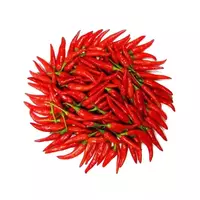Cayenne pepper

Cayenne pepper or Capsicum annuum is a species of perennial plant in the Nightshade family. This pepper is also called green shrub pepper, spicy or cain capsicum. The homeland of Kaena pepper is considered the territory of modern Mexico, in addition, Caeina pepper is grown in India. Often cayenne peppers are called chili. However, these are two different vegetable crops, which, however, have a lot in common. We can say that cayenne pepper, as well as chili, differs from other representatives of the Nightshade family in its sharp, and sometimes rather burning taste and characteristic peppery aroma.
The plant reaches a height of no more than
1. 5 meters. Cayenne pepper may vary in size. From rounded in shape and neat peppers, which do not exceed in length and 8 cm to elongated proboid fruits. It all depends only on the species of cayenne pepper and on the place of growth of the plant. Cayenne pepper was widely used by indigenous people in the South American region. Archaeologists found reliable confirmation of this during the excavations of the oldest burials in Peru, where, along with dishes and other kitchen utensils, they found hot cayenne pepper, which was considered sacred and eaten.
The most remarkable thing is that cayenne pepper is one hundred percent "wild" plant. People try to cultivate cayenne pepper, but the plant stubbornly does not want to grow in slender rows on the farm grounds. Therefore, cayenne pepper grows best in a "wild" form. It is also interesting that all types of cayenne pepper differ in the content of the biologically active substance capsaicin in the chemical composition of the plant. Cayenne pepper fruits differ not only in the degree of sharpness, but also in color. Fully ripe red, black, yellow and white cayenne pepper fruits are used in cooking.
In addition, non-ripening green and purple fruits of cayenne pepper are used as a spice. In addition to the distinctive taste characteristics, cayenne pepper boasts an excellent vitamin-mineral composition, in which vitamins of group B, PP, C are present, as well as E. The chemical composition of cayenne pepper is enriched with such useful biologically active compounds as potassium, iron, phosphorus, sodium, calcium. Even the ancient Peruvians used cayenne pepper as a powerful antibacterial agent.
Peru's cuisine, like most countries in the region, is simply beyond conceivable without cayenne pepper, which is considered a must-have ingredient in most dishes from the native South American everyday diet. On the counters of domestic stores you can find cayenne pepper spicy in ground form. However, in September you can buy cayenne pepper from a fresh harvest and prepare the spice for the winter. Cayenne pepper can be dried and used whole or ground.
Cayenne pepper 93 kCal
Energy value of cayenne pepper (Ratio of proteins, fats, carbohydrates - ju):
Proteins: 0.2 g (~ 1 kCal)
Fats: 0.2 g (~ 2 kCal)
Carbohydrates: 22.3 g (~ 89 kCal)
Energy ratio (bj | y): 1% | 2% | 96%
 Español
Español Français
Français Português
Português Русский
Русский 简体中文
简体中文 繁體中文
繁體中文 日本語
日本語 한국어
한국어 العربية
العربية Türkçe
Türkçe Қазақ
Қазақ Deutsch
Deutsch Italiano
Italiano Українська
Українська
